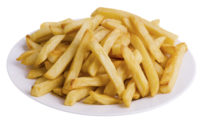Study: Global Frozen Food Market Expected to Reach $293.75B by 2019

Transparency Market Research, Albany, N.Y., says the demand for frozen food, which was valued at $224.74 billion in 2012, is expected to reach $293.75 billion by 2019.
According to the study, "Frozen Food Market (Vegetables & Fruits, Potatoes, Ready-to-eat Meals, Meat, Fish/Seafood and Soups) - Global Industry Analysis, Size, Share, Growth, Trends and Forecast, 2013 – 2019," the global market for frozen food witnessed growth due to the growing demand for faster-to-prepare foods, new product launches in the market and strong demand from emerging economies. However, government intervention and regulations are major restraints for the market growth.
Frozen food made with natural and organic ingredients provides huge market opportunity for manufacturers. In fact, the global market for frozen food byproducts was dominated by frozen ready meals, including frozen pizza, desserts, snacks and entrées, accounting for more than 30% of the total market revenue in 2012 and expected to grow at a CAGR of 3.9% from 2013 to 2019. The frozen fruits and vegetables segment is experiencing a surge in demand due to advancements in freezing technologies, which allows manufacturers to preserve the nutritional value of the vegetables and fruits for a longer time period. This market share is expected to grow at a CAGR of 4.3% from 2013 to 2019.
The frozen potatoes market is expected to witness the highest growth rate in the future and is estimated to grow at a CAGR of 4.3% from 2013 to 2019.
In 2012, Europe and North America had the largest share of the global frozen food market, at 39.5% and 26.3% respectively. This dominance is driven by increased preference toward convenience foods, food safety concerns and a busy lifestyle. The Asia Pacific market is estimated to be another attractive market for frozen food because of the healthy growth rate and increasing consumer preference toward frozen food.
The U.S. was the largest market in 2012 and accounted for more than 80% share in the frozen food market, followed by Japan and Germany. Brazil is the most attractive market for frozen food due to availability of raw materials in abundance quantity, which makes frozen food products more accessible and affordable for consumers. The Brazil market is expected to grow at a CAGR of 4.7% from 2013 to 2019. Countries such as China, India and Mexico also offer huge market opportunities for frozen food.
There are several brands available in the market for frozen food, however very few have a significant market share. The market for frozen food is highly fragmented, as the Top 6 companies have less than 20% of the market share in 2012, along with the presence of a number of small and medium-sized participants. Key market participants include Nestlé, ConAgra, H.J. Heinz and McCain Foods, among others.
Looking for a reprint of this article?
From high-res PDFs to custom plaques, order your copy today!






